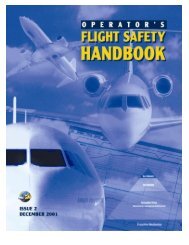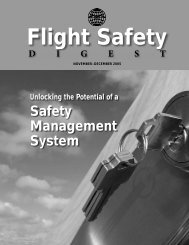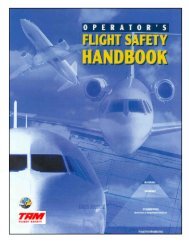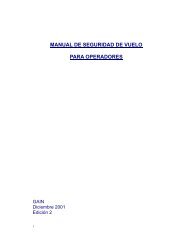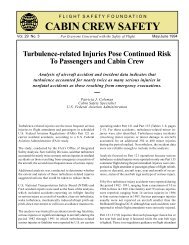Download PDF [10.9 MB] - Flight Safety Foundation
Download PDF [10.9 MB] - Flight Safety Foundation
Download PDF [10.9 MB] - Flight Safety Foundation
Create successful ePaper yourself
Turn your PDF publications into a flip-book with our unique Google optimized e-Paper software.
INFOSCAN<br />
Proceed With<br />
CAUTION<br />
Is over-specification of procedures a potential safety hazard?<br />
BY RICK DARBY<br />
A Never-Ending Story<br />
Trapping <strong>Safety</strong> into Rules: How Desirable or<br />
Avoidable is Proceduralization?<br />
Bieder, Corrine; Bourrier, Mathilde (editors). Farnham, Surrey,<br />
England and Burlington, Vermont, U.S: Ashgate, 2013. 300 pp.<br />
Figures, tables, references, index.<br />
Trapping <strong>Safety</strong> into Rules — there is a title<br />
as provocative as you are likely to see this<br />
year in books aimed at aviation safety<br />
professionals.<br />
No one needs a definition of rules. Bieder<br />
and Bourrier describe “proceduralization” as<br />
“firstly, the aim of defining precise and quantified<br />
safety objectives, and secondly, the aim of<br />
defining a process, describing and prescribing<br />
at the same time how to achieve such objectives.”<br />
Unfortunately, “these two aspects are<br />
usually not defined by the same entity. Some<br />
inconsistencies may even exist between the two<br />
types of procedures.”<br />
Questioning the role of rules and proceduralization<br />
goes to the heart of commercial<br />
aviation, one of the most heavily rule-bound<br />
industries. Almost every aspect of the industry<br />
is covered by regulations (a subset of rules),<br />
standard operating procedures, standards and<br />
best practices. Accident investigation reports<br />
usually conclude with recommendations for<br />
new regulations and procedures.<br />
The remarkable safety record of the industry<br />
is due in large part to effective procedures.<br />
They are the result of lessons learned from<br />
accidents and incidents, as well as research and<br />
predictive analysis.<br />
But can there be too much of a good thing in<br />
the aviation rulebook?<br />
The editors think so. Bieder and Bourrier<br />
say that proceduralization of safety is part of a<br />
general trend toward “the bureaucratization of<br />
everyday life. … Even commonplace consumption<br />
or simple emotions are rationalized and<br />
subject to prescribed procedures, notably at<br />
the workplace. In addition, the dangerous link<br />
between bureaucratization and administrative<br />
evil has also long been established. The key role<br />
played by technical rationality in this irresistible<br />
and sometimes dangerous push always<br />
combines scientific method and procedures.<br />
48 | FLIGHT SAFETY FOUNDATION | AEROSAFETYWORLD | MAY 2013


![Download PDF [10.9 MB] - Flight Safety Foundation](https://img.yumpu.com/18550968/50/500x640/download-pdf-109-mb-flight-safety-foundation.jpg)

![Download this Issue [PDF 7 MB] - Flight Safety Foundation](https://img.yumpu.com/18859635/1/190x245/download-this-issue-pdf-7-mb-flight-safety-foundation.jpg?quality=85)
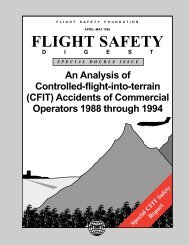
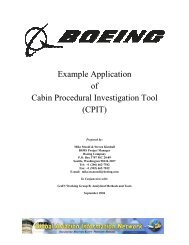
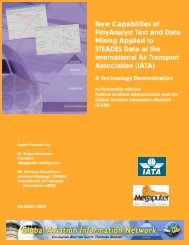
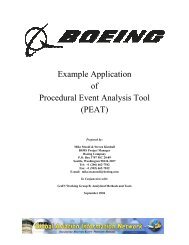
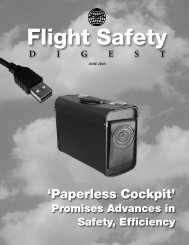
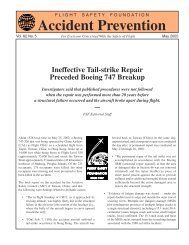
![Download [PDF 8 MB] - Flight Safety Foundation](https://img.yumpu.com/18859366/1/190x245/download-pdf-8-mb-flight-safety-foundation.jpg?quality=85)
